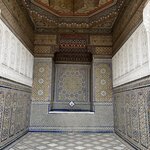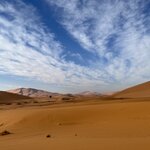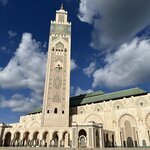Highlights
- Wander Marrakech's old medina and maze-like souks
- Explore sand dunes, oases, and old kasbahs in the desert
- Ride a camel in the Sahara and enjoy traditional music at the campfire
- Wander the quiet, blue-washed streets of Chefchaouen
- Enjoy views of Mount Toukbal from Tizi-n-Tichka Pass
Brief Itinerary
| Day | Highlights | Overnight |
|---|---|---|
| Day 1 | Fes: Exploring the Imperial City & Medieval Medina | Fes |
| Day 2 | Fes to Meknes, Volubilis, and the "Blue City" of Chefchaouen | Chefchaouen |
| Day 3 | Chefchaouen to Fes | Fes |
| Day 4 | Over the Middle Atlas to the Desert: Erfoud, Merzouga & the Sahara | Merzouga |
| Day 5 | Desert Adventures Around Merzouga, Rissani Market, Todra Gorge | Todra Gorge |
| Day 6 | Todra Gorge, Dades Valley, Ouarzazate, Ait Benhaddou | Aït Benhaddou |
| Day 7 | Ait Benhaddou, Tizi-n-Tichka Pass over the High Atlas, Marrakech | Marrakech |
| Day 8 | Marrakech: Exploring the Red City | Marrakech |
Detailed overview
Day 1: Exploring Fes

Fes is the oldest of the four imperial cities and is considered to have the most complete medina in the Arab world. Relatively untouched since it was founded over 1000 years ago, the haphazard streets provide a sense of what it was like to live during medieval times in Morocco. Often considered the country's cultural capital, it is made up of three parts, two medina quarters, Fes el Bali and Fes el Jdid, and the more modern, French colonial influenced, Ville Nouvelle. Meet your guide for a half-day tour and learn about the rich history and culture as you navigate the winding streets of the medinas.
Start in Fes el Bali at the Bab Boujeloud gate and enter the main thoroughfare of Talâa Kebira. Notice the Spanish and Tunisian influenced architecture as you make your way past shops and souks. Visit the Chouara Tannery and marvel at the many dye-filled stone pots and the men at work still using centuries-old techniques. Next, admire the intricate zellij tilework of the 14th-century Al Attarine Madrasa before heading over to the Mellah (old Jewish quarter and cemetery) in Fes el Jdid. If there's time, visit Ville Nouvelle to discover the dramatic change in architecture.
Day 2: Fes to Meknes, Volubilis, and the "Blue City" of Chefchaouen

As you leave Fes, stop at the Merenid tombs (giant tombs of royalty/officials) for one last panoramic view before hitting the road towards Meknes.
If you'd like, make an optional stop in Meknes. This prosperous city is a nice preparation for your time in Fes: the medina is smaller, less busy, and shopkeepers are not quite as pushy. While the city is quite large, the two main areas of interest are the Ville Impériale (Imperial City) and the medina.
Move along to the Roman Ruins at Volubilis, a UNESCO world heritage site that contains Morocco’s best preserved Roman ruins and makes for a nice detour from the hustle and bustle of Meknes. Today you can wander the massive complex, exploring large merchant homes with visible heating systems underneath, temples, and many colorful mosaics in situ.
In the afternoon, enjoy the scenic drive to Chefchaouen as the flat plains and rolling hills transform into the mountainous landscape of the Rif range. Mostly untouched since the 15th century, Chefchaouen offers a relaxed atmosphere with some of the friendliest people in the country. Discover Plaza Outa el-Hammam, the main square, before enjoying a bite to eat at one of the nearby restaurants or cafés.
You can also trek up the hill to the city walls and follow the path to Hotel Atlas. Access the rooftop and admire the expansive view over the Blue City. Towards the end of the day, walk east of the city to ascend a path to the white Spanish Mosque. Its location offers a great spot to watch the sunset behind the mountains.
Day 3: Chefchaouen to Fes

Rise early and you may be treated with an hour of quiet as you wander the streets in the morning before the 3.5 hours back to Fes. Before venturing into its UNESCO-protected medina, climb the small hill to the Merenid Tombs to enjoy an encompassing view of the city as well as to orient yourself. It's best to visit the tombs during dusk as the city lights start to come on and the muezzin's calls to worship sound through the valley. Return to the medina and to your accommodation, a traditional riad.
Chat with a local specialist who can help organize your trip.
Day 4: Over the Middle Atlas to the Desert
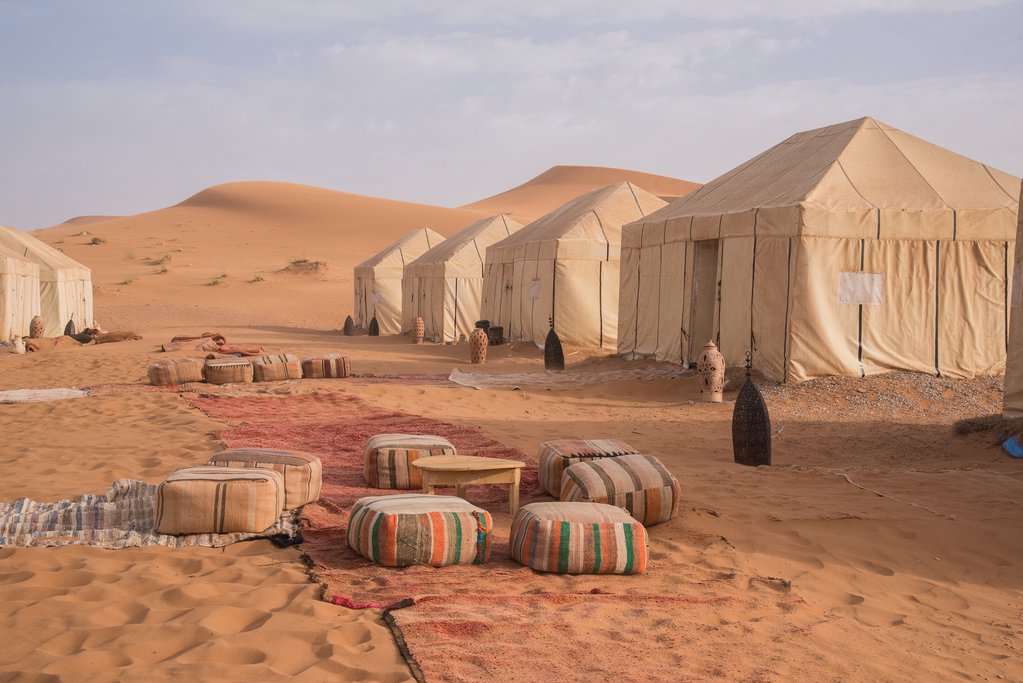
Get an early start today—you'll be covering a lot of ground as you head over the Middle Atlas, through a cedar forest, and into the desert region. There are several towns to stop along the way before arriving at the dunes of the Sahara near Merzouga.
After the town of Azrou, climb up and over the Col du Zad pass and through the cedar forests of the Middle Atlas mountains. Keep your eyes peeled for families of Barbary macaque monkeys in the trees and by the side of the road. Enjoy a short lunch stop in Midelt, known as the "Apple City;" the nearby River Moulouya allows for orchards to grow in the desert. Continue over the Tizi-n-Talremt pass and into the Ziz Valley. Along the road, you'll see fortified houses known as ksars built by merchants to protect precious wares like gold, salt, and spices.
Erfoud is a bustling market town, known for its date festival and its fossil mining and artisan factories (you may have already seen some fossils in the markets). While in town, stop at a local artisan collective where you can to learn about the types of fossils found in the area and to see the full process of how the fossil-rich rock is transformed into beautiful objects, large and small.
Soon you will see Erg Chebbi in the distance, an extensive sand dune sea. The dunes, some more than 200 m tall, change color depending on time of day, becoming most vibrant at sunset. Stop near Merzouga for a camel ride through the dunes, arriving at camp just before sunset. Climb up the nearest sand dune to watch the colorful display, then head back to camp for dinner, enjoying traditional Berber music.
Day 5: Desert Adventures Around Merzouga, Rissani Market, Todra Gorge
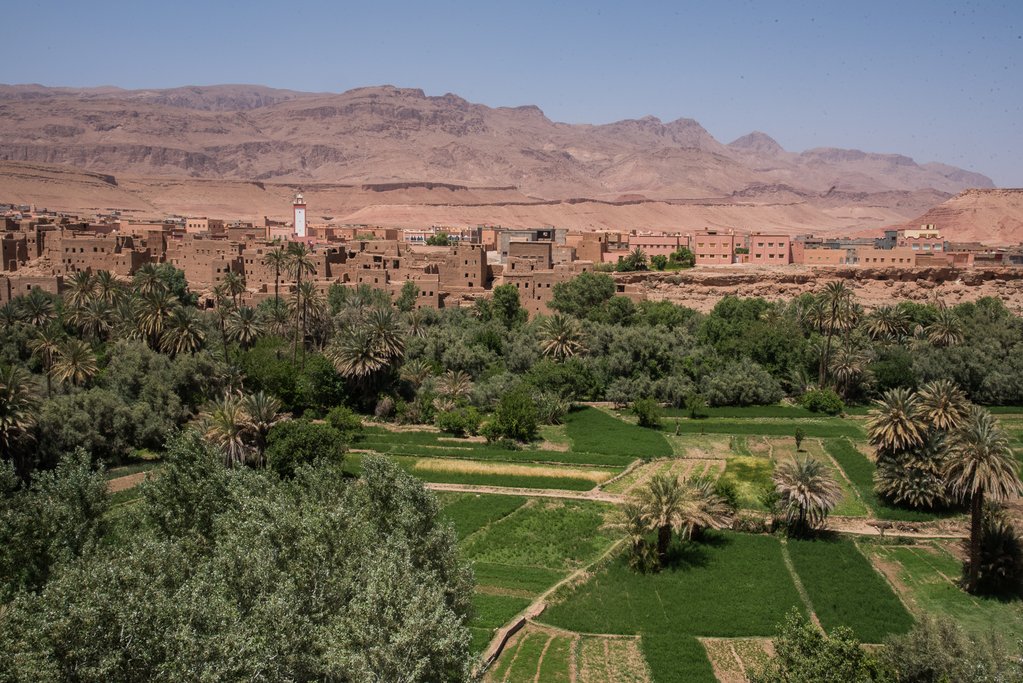
Spend the morning exploring more of the Sahara: rent a sand board and test your skills on the dunes, take the Erg Shibi tour, join a quad ATV tour, or simply relax for a bit by a pool. If you're an early riser, you'll be rewarded with a sunrise to remember. Or take a tour of nearby Khamleya, a traditional Saharan village where you can enjoy drumming and dancing before checking out the farmed plots in the sand.
As you leave the Merzouga region, stop in Rissani, another market town with a most impressive gate at the entrance into town. It is a good place to take a walk around a traditional market, especially on market days when many animals are bought and sold. Be sure to stop by the "donkey parking lot" while you're here.
Make a stop in Tinerhir to admire the river oasis that extends on either side of the town. The surrounding desert landscape reveals impressive buttes, mesas, and plateaus. Nearby, you will have the opportunity to explore the Todra Gorge, a 984 feet (300 m) deep ravine, cut by the Todra River.
Day 6: Dades Valley, Ouarzazate, Ait Benhaddou

Rise early to witness a Saharan sunrise, before exploring more of the desert: rent a sandboard, join the Erg Shibi tour (around the sand dunes) or a quad ATV tour. Head south to Khemliya to explore this traditional Saharan village. You will have a second chance to stop in Rissani to visit Maison Tuareg, a storehouse selling traditional carpets, jewelry, and leather goods. From there, pass through umbrella-shaped trees of the acacia forests before reaching Alnif for lunch. Continue on through the Draa Valley, dense with date palmeries and the opportunity to pick up a box of dates for the drive.
Continue west to medieval Aït Benhaddou. A protected UNESCO site, Aït Benhaddou is the most famous kasbah in Morocco and once upon a time, held an important position along the trans-Saharan trade route between Marrakech, Ouarzazate, and the southern desert. Spend the night in the old town and wander the empty alleys after the day-crowds have left. Pay a nominal fee to enter a few of the kasbahs and climb up to the rooftop for pretty views of the surrounding ksours (individual kasbahs) and Ouarzazate Valley.
Day 7: Tizi-n-Tichka Pass over the High Atlas, Marrakech

This morning you'll head up and over the High Atlas, looking out for the highest peak, Mount Toubkal. Near the top, you can enjoy great panoramic views over the mountain range, as well as the road ahead snaking down the mountainside.
The first town after the pass is Taddert, where you can stop at an Argan Oil Cooperative to learn how olives are processed for a variety of uses. Descending the north facing slopes of the High Atlas, you will notice a dramatic change in climate and landscape, with river valleys carved into the hillsides. After all the tranquillity of the mountains and the desert, soon you will be in the midst of vibrant Marrakech.
In the early evening, Jemaa el Fna Square comes alive, with musicians, performers, snake charmers, games, footstalls and more. If you want to enjoy from a distance, there are many cafes surrounding the square where you can sit and enjoy the show with your meal.
Day 8: Marrakech
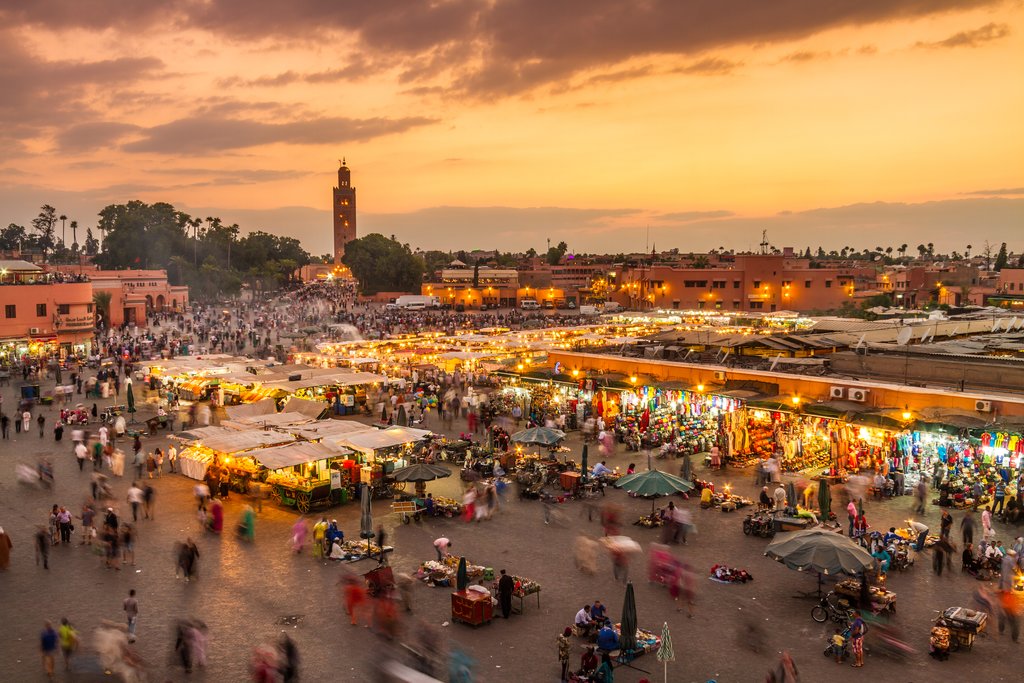
Nicknamed the "Red City" for its 1000-year old red sandstone city walls and buildings, Marrakech is a major economic center. Depending on how long you have before your departure flight, spend some time exploring the city.
Unlike Fes, Marrakech has Berber rather than Arab roots and was once an important trading capital for tribes of the Atlas Mountains. Orient yourself around Marrakech's bustling Jemaa el-Fna Square: the souks (markets) are to the north, the Koutoubia Mosque and Gardens to the west and the kasbah (fort or fortification) area with the Saadian Tombs, Bahia Palace, and El Badi Palace are to the south. In the Ville Nouvelle, you will find the Majorelle Gardens.
For a unique way to tour the medina (old quarter), board a calèche (French for horse-drawn carriage) and begin to adjust to your surroundings. Notice the fondouks—medieval inns that provided merchants and travelers with shelter and supplies. Today some have been converted into residences or large shopping areas and workshops that you can explore. Find your way to the Koutoubia Mosque and take a respite from the heat in its gardens amid fountains and palms. Though the mosque cannot be entered by non-muslims, it's worth checking out its 12th-century foundations and minaret.
As the evening progresses, Jemaa el-Fna comes alive with musicians and storytellers, acrobats and dancers, and even snake charmers. Wander the many rows of food stalls serving anything from full meals to fruit drinks, dried dates, and small snacks. Grab a bite, or for a more relaxed experience, look for one of the many cafés that sit above the square to enjoy a meal while you watch the show below.



